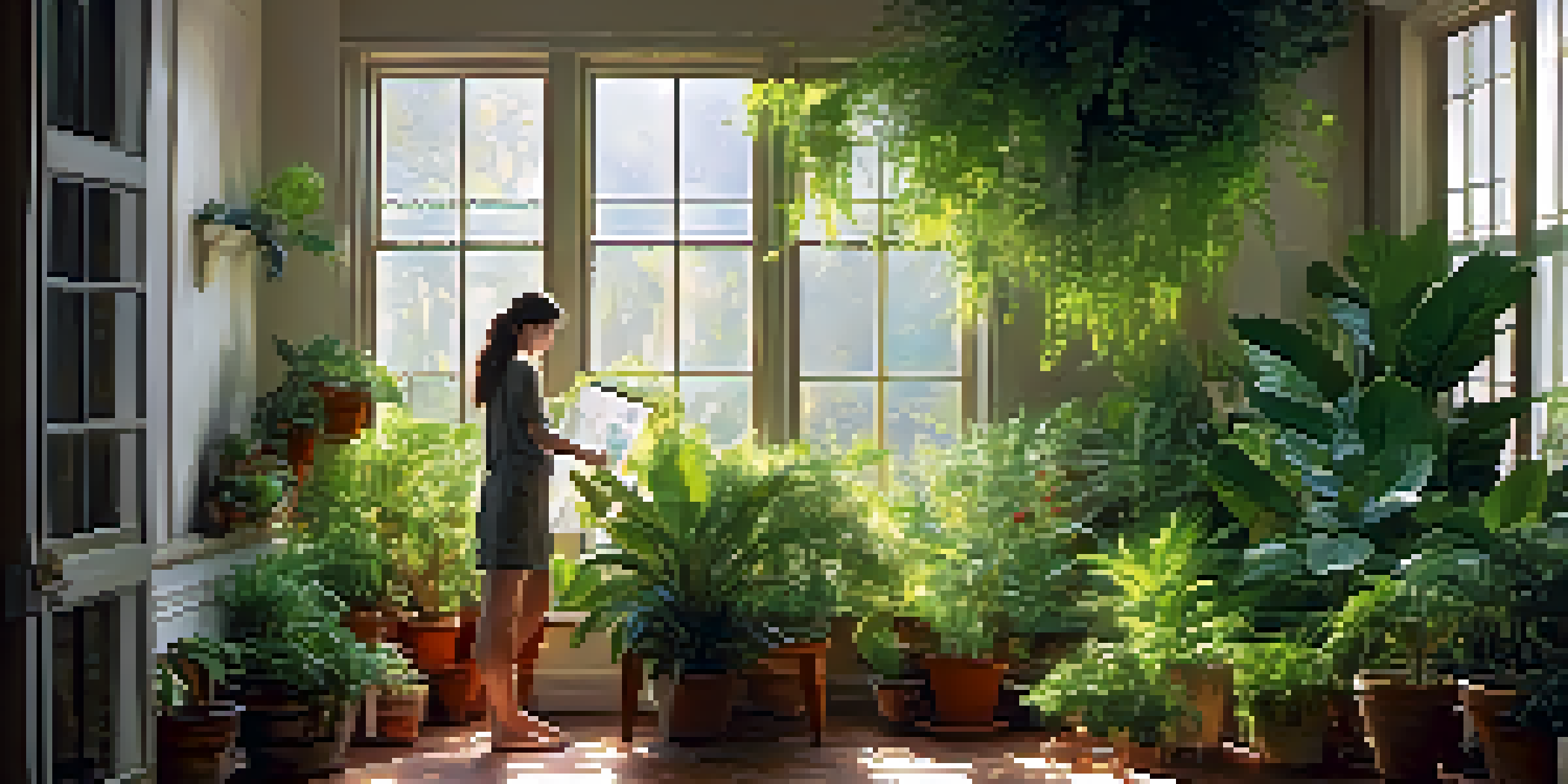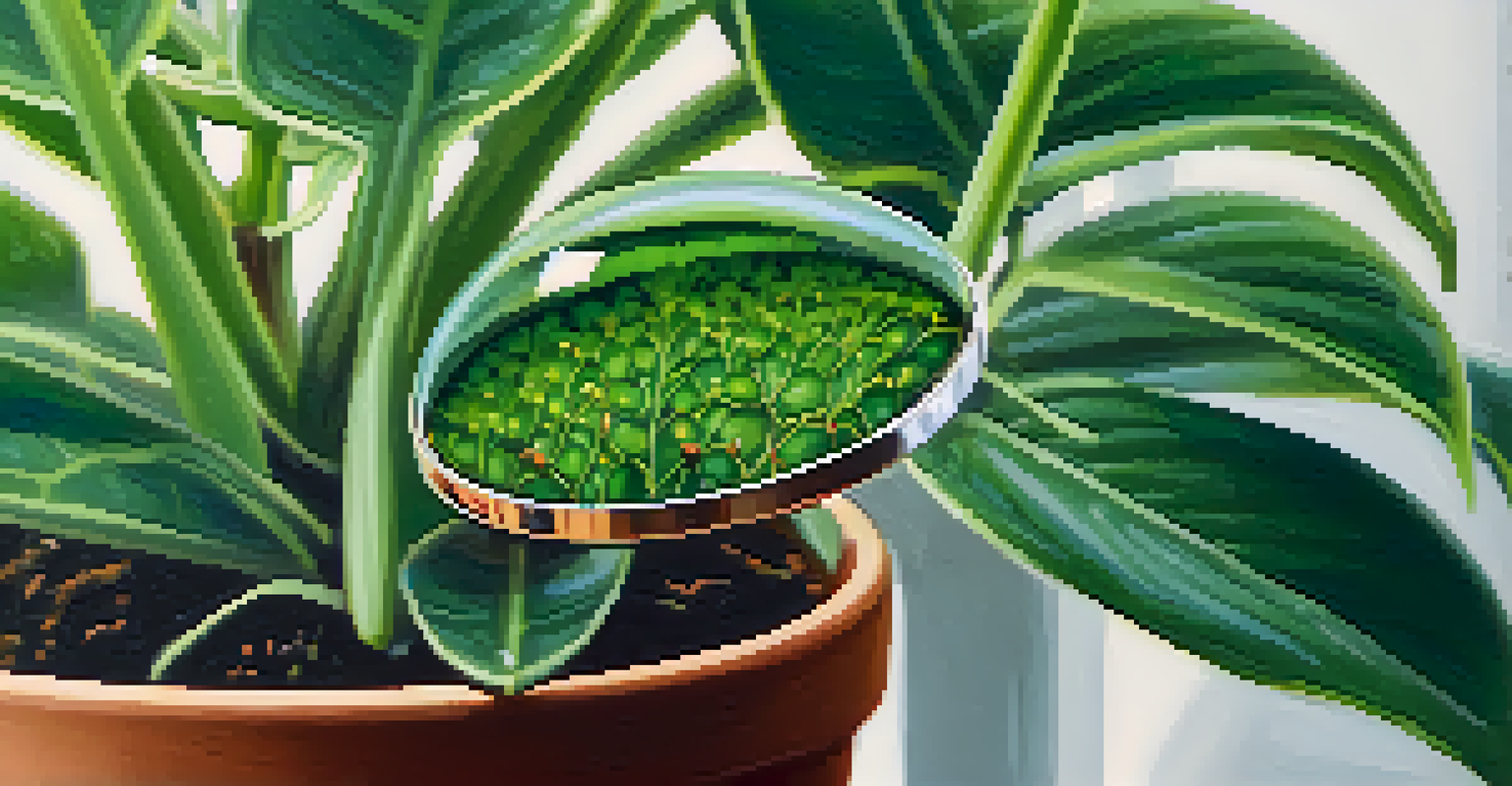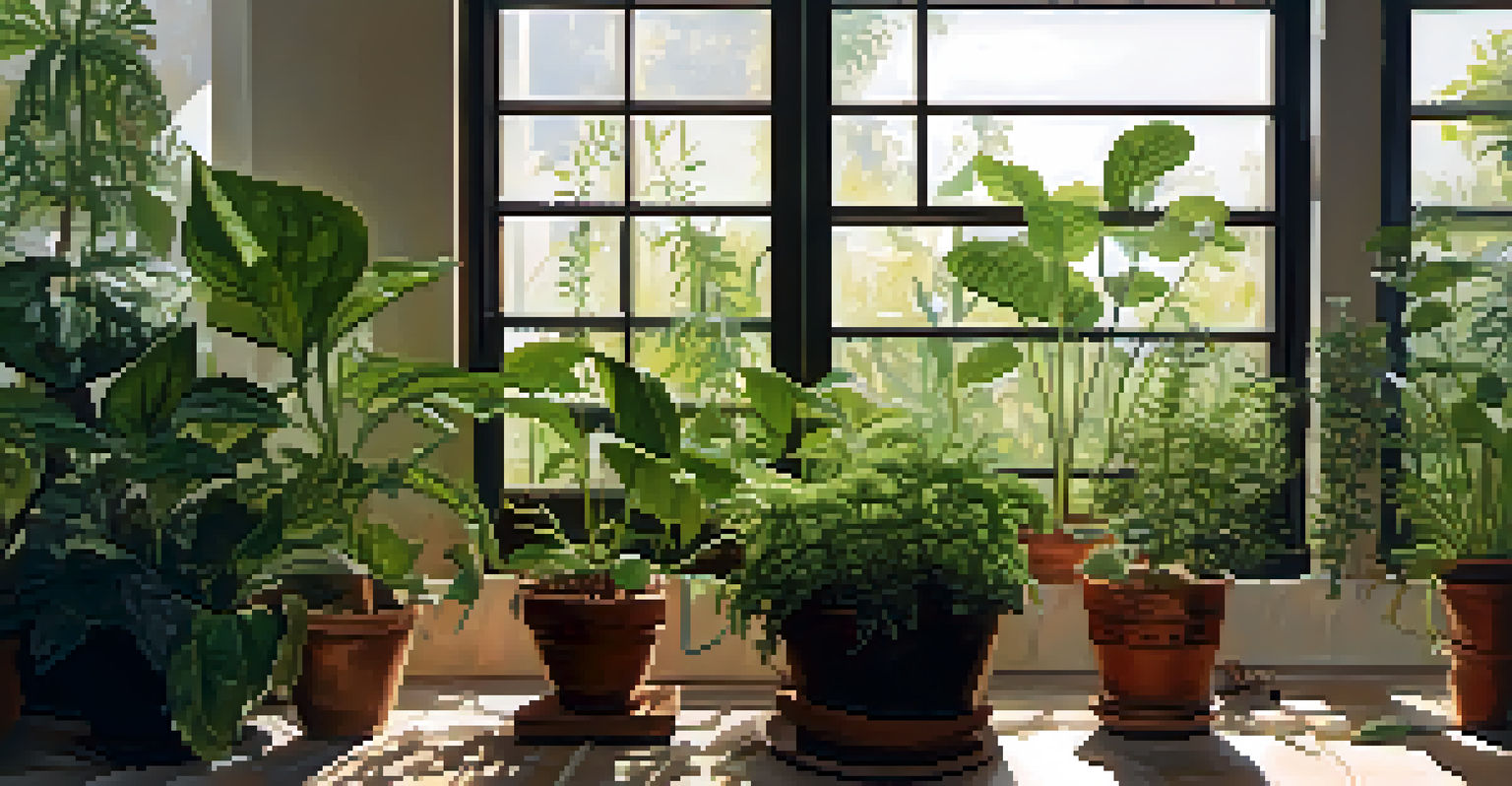How to Identify and Treat Common Indoor Plant Pests

Recognizing the Signs of Indoor Plant Pests
The first step in dealing with indoor plant pests is to recognize their presence. Look for unusual changes in your plants, such as yellowing leaves, stunted growth, or sticky residue on the foliage. These signs can often indicate an infestation, prompting you to investigate further.
To plant a garden is to believe in tomorrow.
Next, inspect your plants closely. Pests like aphids and spider mites can be tiny and easily overlooked. Using a magnifying glass can help you spot these intruders, making it easier to take action before they wreak havoc on your greenery.
Lastly, keep in mind that not all pests are visible at first glance. Some may be hiding in the soil or on the undersides of leaves. Regular monitoring and a keen eye will help you catch these pests early, saving your plants from potential damage.
Common Indoor Plant Pests to Watch For
Several common pests tend to invade indoor plants, each with its unique characteristics. Aphids, for instance, are small, soft-bodied insects that cluster on new growth and can cause significant damage if left unchecked. Scale insects, on the other hand, appear as small, brown bumps on stems and leaves.

Spider mites are another frequent visitor, especially in dry conditions. These tiny pests can create fine webbing on plants, indicating a serious infestation. Identifying these pests early on is crucial for preventing widespread damage.
Identify Indoor Plant Pests Early
Recognizing signs of pests, such as yellowing leaves or sticky residue, is crucial for preventing infestations.
Lastly, fungus gnats can be a nuisance, especially if you notice small flies hovering around your plants. While they don’t directly harm the plants, their larvae can damage the roots, leading to poor plant health. Being aware of these common pests helps you stay vigilant and proactive.
Natural Remedies for Indoor Plant Pests
If you prefer a natural approach, several remedies can help you combat indoor plant pests. A simple solution of water and mild soap can effectively remove pests like aphids and spider mites when sprayed on affected areas. Make sure to rinse the leaves afterward to avoid any soap residue.
The best time to plant a tree was twenty years ago. The second best time is now.
Neem oil is another excellent natural remedy, acting as both a pesticide and a fungicide. It's derived from the seeds of the neem tree and disrupts the life cycle of pests, making it a powerful ally in your pest management arsenal. Applying it every couple of weeks can help keep infestations at bay.
Lastly, introducing beneficial insects, such as ladybugs, can provide an organic way to control pest populations. These friendly bugs feast on aphids and other pests, helping to maintain a healthy ecosystem in your indoor garden.
Chemical Treatments for Persistent Pest Problems
Sometimes, natural remedies may not be enough to tackle stubborn infestations. In such cases, chemical treatments can be effective. Insecticidal soaps and pyrethrin-based sprays are commonly used options that can eliminate pests quickly while being relatively safe for indoor use.
When using chemical treatments, always read labels and follow instructions carefully. It's essential to apply these products in a well-ventilated area and to avoid using them during the hottest part of the day to prevent plant damage.
Natural Remedies for Pests
Using solutions like neem oil or soapy water can effectively manage indoor plant pests without harsh chemicals.
Additionally, consider isolating infested plants to prevent pests from spreading to healthy ones. This approach allows you to treat the affected plants without putting your entire indoor garden at risk.
Preventing Future Pest Infestations
Prevention is the best strategy for keeping indoor plant pests at bay. Start by ensuring that your plants are healthy, as stressed plants are more susceptible to infestations. Regularly check for pests and remove any dead or dying leaves to minimize hiding spots.
Another key preventive measure is to maintain proper watering and humidity levels. Overwatering can lead to root rot, attracting pests like fungus gnats. Conversely, too little humidity can create favorable conditions for spider mites.
Lastly, consider rotating your plants regularly and cleaning their leaves with a damp cloth. This practice not only helps prevent pests but also promotes better light absorption, contributing to healthier plants overall.
Understanding the Life Cycle of Plant Pests
To effectively manage indoor plant pests, it's important to understand their life cycles. Many pests, like aphids, reproduce quickly, leading to rapid population growth if not controlled early. Recognizing the stages of their life cycle helps you determine the best time to intervene.
For instance, targeting pests during their juvenile stages can be more effective than waiting until they’re adults. Understanding that some pests lay eggs can also guide your treatment approach, ensuring you don’t just treat the visible pests but also the potential next generation.
Seek Help for Severe Infestations
When facing significant or persistent pest problems, professional assistance can provide tailored solutions and treatments.
Being aware of how long pests may persist in your indoor garden allows you to tailor your pest management strategy effectively. This insight can make a world of difference in maintaining the health of your plants.
When to Seek Professional Help for Pest Control
While many indoor plant pest issues can be managed at home, there are times when professional help is warranted. If you notice a significant infestation that seems unmanageable, it may be time to call in the experts. They have access to more potent treatments and can provide tailored solutions for your specific situation.
Additionally, if your plants are suffering from persistent pest problems despite your best efforts, professionals can help identify underlying issues that you may have overlooked. Factors like poor drainage or inadequate lighting can contribute to plant stress, making them more vulnerable to pests.

Finally, consider seeking professional help if you have valuable or rare plants. Protecting these investments with expert assistance ensures that you’re doing everything possible to maintain their health and longevity.